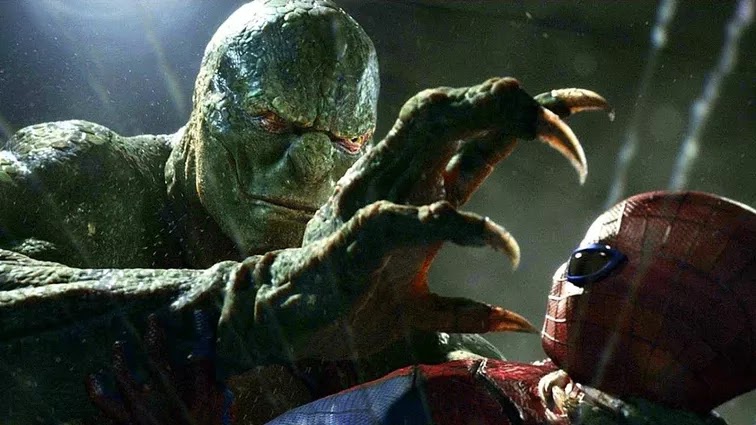
Sony’s Spider-Verse: A Bold Move or Big Oof?
August 19, 2024Sony Pictures has been steadily building its own corner of the Marvel Universe, focusing on characters tied to Spider-Man, but notably excluding Spider-Man himself (at least in most cases). This strategy, often referred to as the “Sony Spider-Verse,” has seen mixed results both critically and financially. With films like Venom, Morbius, and the upcoming Kraven the Hunter, Sony is betting big on characters traditionally seen as Spider-Man’s supporting cast or villains. But how effective has this strategy been, and what does it mean for the future of comic book movies?
Table of Contents
The Birth of Sony’s Spider-Verse: Capitalizing on Spider-Man’s Legacy

Sony’s Spider-Verse strategy emerged out of necessity as much as ambition. After the somewhat mixed reception of The Amazing Spider-Man 2 (2014), Sony restructured its approach to the Spider-Man franchise, opting to share the character with Marvel Studios, resulting in Tom Holland’s Spider-Man becoming part of the Marvel Cinematic Universe (MCU). This collaboration, while beneficial, meant Sony couldn’t fully capitalize on one of the most lucrative superheroes in their portfolio.
To maintain a foothold in the superhero genre, Sony pivoted to developing movies based on Spider-Man’s villains and supporting characters. Venom (2018) was the first major film in this new strategy. Despite lukewarm reviews, Venom was a financial success, grossing over $850 million worldwide. This success demonstrated there was an audience for Spider-Man-adjacent stories, even without Spider-Man himself in the picture.
Successes and Setbacks: A Mixed Bag

Following Venom’s success, Sony doubled down on its Spider-Verse strategy, planning a series of films featuring other characters from Spider-Man’s world. However, not all of these efforts have been successful. Morbius (2022), another film focusing on a Spider-Man villain, was widely panned by critics and became something of a meme online due to its poor reception. Despite its $163 million gross, Morbius is often seen as a failure, both in terms of quality and cultural impact.
The issue with Sony’s approach is the inconsistency in quality. While Venom was able to connect with audiences through its quirky humour and Tom Hardy’s committed performance, Morbius failed to find its footing, leading to questions about whether Sony’s strategy was sustainable without Spider-Man at the centre.
The upcoming Kraven the Hunter film is another critical test for Sony. Kraven is a beloved character in the comics, but much like Morbius, he is largely unknown to the general public. The film’s trailers suggest a darker, more violent tone, possibly to capitalize on the success of R-rated superhero films like Deadpool and Logan. However, the big question remains: can Kraven’s story resonate with audiences without Spider-Man as his foil?
The Absence of Spider-Man: A Strategic Weakness?
One of the most significant challenges Sony faces with its Spider-Verse strategy is the absence of Spider-Man himself. In the comics, characters like Venom, Morbius, and Kraven are defined by their relationship with Spider-Man. They are compelling villains largely because of their interactions with the web-slinger. By removing Spider-Man from the equation, Sony is taking a significant risk. These characters must stand on their own, which can be challenging when their backstories and motivations are so closely tied to Spider-Man.
This absence leads to a fundamental question: can Sony’s Spider-Verse thrive without its most iconic character? The answer is complicated. On one hand, the success of Venom suggests that it’s possible, but on the other hand, Morbius shows that the lack of a strong central hero can lead to narrative and character issues. The absence of Spider-Man can make these films feel incomplete, as though they are missing a crucial piece of their identity.
Exploring New Narratives: The Potential of the Spider-Verse

Despite these challenges, Sony’s Spider-Verse does have potential. By focusing on villains and anti-heroes, Sony can explore darker, more morally complex stories than what we typically see in the MCU. This could attract audiences looking for something different from the standard superhero fare.
Moreover, Sony’s Spider-Verse offers the opportunity to delve into lesser-known characters and storylines from the Spider-Man comics. For example, there is potential for a film centred around the Sinister Six, a group of Spider-Man villains who team up to take him down. This could provide a fresh take on the superhero team-up genre, focusing on villains rather than heroes.
Another intriguing possibility is the eventual introduction of Spider-Man into the Sony Spider-Verse. If Sony and Marvel Studios can agree on terms, bringing Spider-Man back into the fold could provide the boost these films need to reach their full potential. The success of Spider-Man: No Way Home (2021), which blended elements from Sony’s previous Spider-Man films with the MCU, shows that audiences are eager to see these worlds collide.
A High-Risk, High-Reward Strategy
Sony’s Spider-Verse strategy is undoubtedly a bold one. By focusing on Spider-Man’s villains and side characters, Sony is trying to carve out its own niche in the crowded superhero market. While the results have been mixed, the potential for success is there, especially if Sony can find the right balance between character-driven stories and broader narratives that connect these films.
However, the absence of Spider-Man is a significant hurdle that Sony will need to address if it wants its Spider-Verse to thrive in the long term. Whether through new, compelling narratives or by eventually bringing Spider-Man into the fold, Sony’s path forward is fraught with challenges—but also with opportunities.
In the end, Sony’s Spider-Verse could either be remembered as a daring and innovative expansion of the superhero genre or as a series of missed opportunities. The outcome will depend on how well Sony can execute its vision and whether audiences will embrace these characters without their iconic counterpart.



